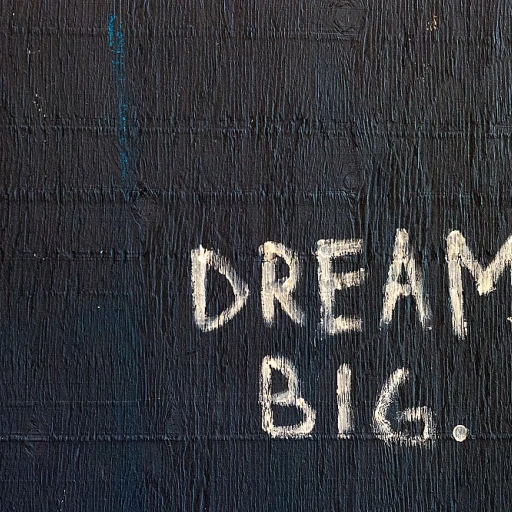
Understanding Lean Principles in HR
Embracing Lean Fundamentals in HR Strategy
In today's rapidly evolving business landscape, the adoption of lean methodologies has become an imperative for effective human resource management. Originally derived from lean manufacturing principles, these methodologies now play a crucial role in enhancing HR efficiency by focusing on waste reduction, continuous improvement, and optimized processes.
Lean, a management philosophy often associated with manufacturing, emphasizes streamlining processes, reducing waste, and improving workflow. It advocates for a continuous flow of operations, ensuring that every step adds value and aligns with the broader organizational strategy. In the context of HR, understanding these lean concepts can revolutionize how processes are defined and executed, ultimately enhancing organizational performance.
The application of advanced roles in lean HR involves various tools and principles, such as stream mapping, kanban boards, and takt time calculations. These tools not only help in visualizing work processes but also identify bottlenecks and optimize the flow of human resources activities, from talent acquisition to employee performance management.
Furthermore, the integration of lean sigma elements ensures that HR processes are fine-tuned to meet specific demands, all while prioritizing quality and efficiency. This involves utilizing frameworks like the PDCA cycle—Plan, Do, Check, Act—for ongoing problem solving and process refinement. Operational excellence in HR isn’t just about implementing tools but fostering a lean culture where continuous improvement is deeply embedded.
Key Lean Tools for Streamlining HR Processes
Essential Tools for Enhancing HR Processes
Incorporating lean tools in human resources can significantly streamline workflows, reduce waste, and increase efficiency. These tools, frequently utilized in lean manufacturing environments, are pivotal in managing and optimizing HR processes. Here's a closer look at some of the most effective tools and methodologies:
- Stream Mapping: Also known as value stream mapping, this tool is essential for identifying areas of waste and inefficiency within HR processes. By visualizing the flow of work, HR teams can pinpoint bottlenecks and optimize for a smoother, continuous flow of tasks.
- Kanban System: A staple of lean methodology, kanban focuses on managing workflow and balancing HR task demand with capacity. This ensures that the team is not overwhelmed and can maintain a steady pace aligned with takt time requirements.
- PDCA Cycle: The Plan-Do-Check-Act cycle, also known as the Deming Circle, is crucial for continuous improvement. Implementing this cycle in HR allows for regular reflection and fine-tuning of processes as needed.
- Root Cause Analysis: Understanding problems at their core is part of effective problem solving. Tools like the "5 Whys" or fishbone diagrams help HR teams dive into issues, reducing recurrence and improving process stability.
- Standardized Work: Establishing consistent procedures for HR processes can significantly enhance operational excellence. This ensures that every team member follows the best practices, reducing errors and increasing productivity.
- Hoshin Kanri: Aligning strategic goals with operational tasks can be a complex process, but with tools like hoshin kanri, HR can synchronize their objectives with overarching company strategies, ensuring maximum performance and alignment.
These lean tools can transform HR functions by enhancing agility, reducing waste, and contributing to total productive maintenance. Adopting such tools requires commitment but promises continuous improvement and adaptability in a dynamic business landscape. For more insights into how HR can integrate these approaches effectively, our article on understanding the role of a Chief Commercial Officer may provide additional context on aligning HR strategies with broader business goals.
Implementing Lean Tools in Talent Acquisition
Integrating Lean Tools in Talent Acquisition
Incorporating lean tools into talent acquisition can significantly enhance efficiency and reduce waste in the hiring process. The lean methodology, originally developed for manufacturing, emphasizes eliminating non-value-added activities and streamlining processes to meet demand effectively. By applying these principles, HR departments can optimize their recruitment strategies.
One of the key lean tools that can be adapted for talent acquisition is value stream mapping. This tool helps in visualizing the entire recruitment process, identifying bottlenecks, and areas of waste. By mapping out each step, from job posting to onboarding, HR professionals can pinpoint inefficiencies and implement improvements.
Another effective tool is Kanban, which can be used to manage the flow of candidates through the recruitment pipeline. By visualizing the stages of the hiring process, HR teams can ensure a continuous flow of candidates, reducing lead times and improving response rates to meet organizational needs.
Additionally, takt time can be applied to align the pace of hiring with the demand for new employees. By calculating the takt time, HR can set realistic timelines for each stage of the recruitment process, ensuring that the hiring rate matches the company’s growth objectives.
Implementing these lean tools requires a commitment to continuous improvement and a willingness to adapt traditional HR processes. By embracing lean principles, HR departments can not only enhance efficiency but also contribute to the overall operational excellence of the organization.
For more insights on optimizing business processes, explore our article on enhancing business growth with effective PPC consulting.
Optimizing Employee Development with Lean Techniques
Maximize Skill Development Through Lean Tools
In the pursuit of optimizing employee development, incorporating lean tools is paramount. Lean methodology has a long history of promoting efficiency in manufacturing, and its principles can be seamlessly adapted to human resources. Implementing lean processes in employee development includes mapping out current skill sets and aligning them with organizational demands. This not only helps in identifying gaps but also in planning a lean strategy to bridge these gaps effectively. Stream Mapping and Standardized Work Stream mapping serves as an essential tool in visualizing the skills flow within your workforce. By documenting each step of your development processes, areas of waste or potential improvement can be pinpointed. This approach aligns with lean manufacturing principles by facilitating continuous flow and reducing the time required for skill acquisition. Standardized work, another key element, ensures that every employee receives the same level of quality training, minimizing variability and enhancing skill retention. Over time, this leads to consistent performance across teams, contributing to total productive capacity. Kanban for Continuous Improvement The use of kanban boards can accelerate problem solving by making progress visible and manageable. Lean tools like kanban can manage training workflows, track employee progression, and ensure just-in-time training delivery, aligning with the takt time required for organizational goals. This continuous improvement process ensures that training is delivered effectively, reducing big losses in knowledge transfer and eliminating bottlenecks in talent development. Root Analysis for Effective Training Programs Root cause analysis can be applied to identify inefficiencies in training programs. By understanding why current training programs may not meet demands, HR leaders can adjust and refine processes, ensuring improvement initiatives align with the lean sigma mentality focusing on operational excellence. By utilizing these lean tools and methodologies, HR departments can enhance their talent development programs, driving progress towards strategic objectives while supporting the company's overarching vision and goals. This meticulous approach not only refines current processes but lays down a framework for future growth, establishing continuous improvement as a cornerstone of the HR strategy.Lean Tools for Performance Management
Performance Management Enhancement through Lean Methodologies
Leveraging lean tools in performance management can significantly enhance the overall efficiency of this vital HR function. These methodologies, originating from lean manufacturing principles such as kanban and total productive maintenance, serve as robust solutions for addressing common challenges within HR processes. Through continuous improvement and root analysis, organizations can achieve operational excellence by reducing waste and optimizing performance outcomes. A key concept in applying lean tools to performance management is stream mapping. This technique helps to visualize the entire performance review process, identifying bottlenecks or inefficiencies in the workflow. By mapping out each step, HR professionals can better understand where time and resources are being overspent and develop strategies for continuous flow. Another vital tool that can be incorporated is takt time, which measures the rate at which performance evaluations should be completed to meet employee demand without unnecessary delays. This concept supports the standardization of work by ensuring that processes align with strategic goals and the efficient use of resources. Hoshin kanri, a strategic planning method, can further bolster performance management by linking the organization's objectives with individual performance goals. By effectively deploying this methodology, HR can ensure that actions on the ground are guided by higher-level strategy. Integrating lean sigma principles allows HR teams to adopt a proactive approach in identifying and solving problems. Techniques like poka yoke (error proofing) and bottleneck analysis can be instrumental in minimizing errors in performance data and ensuring that reviews are not held up or compromised due to preventable issues. Implementing standardized work is crucial for minimizing variation in performance management processes, ensuring consistency across the organization. With a focus on streamlined processes and continuous improvement, companies cultivate an environment that encourages accountability and transparency. Overall, applying these lean methodologies and tools can transform performance management into a highly strategic and efficient process, ultimately contributing to the organization's operational success.Challenges and Solutions in Adopting Lean Tools for HR
Navigating the Hurdles of Lean Methodology in HR
Adopting lean tools in HR isn't always straightforward. Organizations face various challenges, particularly when shifting from traditional processes to lean methodologies accustomed in manufacturing sectors. However, understanding these barriers and their solutions can smooth the transition, paving the way for continuous improvement.- Resistance to Change: One of the most formidable obstacles is the resistance to change. Employees may feel uneasy with new workflows, especially when lean tools like kanban and stream mapping replace familiar processes. To mitigate this, involve employees early in the lean process, communicate its benefits, and provide the necessary training to bolster confidence and reduce reluctance.
- Lack of Expertise: Implementing lean techniques such as lean sigma, takt time, and poka yoke can be daunting without adequate expertise. Organizations may consider hiring external consultants or investing in training programs to cultivate internal knowledge and expertise in these areas, aligning the HR department with lean manufacturing practices.
- Process Mapping Hazards: Incorrect mapping of current processes can lead to ineffective solutions. It's crucial for HR teams to conduct thorough and accurate stream mapping to identify real sources of waste and address them effectively. Utilizing root analysis can aid in pinpointing problem areas precisely.
- Integration with Existing Systems: Lean tools often require integration with current HR management systems, which can pose technical challenges. Engaging IT departments early on and utilizing effective problem-solving techniques can help in achieving a seamless integration while maintaining consistent production demand and continuous flow.
- Focus on Continuous Improvement: Lean methodology emphasizes ongoing improvement, but maintaining momentum can be difficult. Deploying strategies like hoshin kanri and incorporating productive maintenance ensures that the momentum towards operational excellence doesn't wane, thereby solidifying long-term success.













